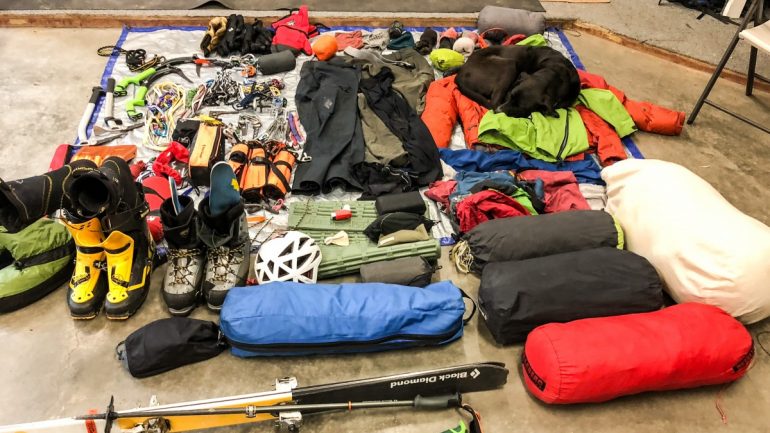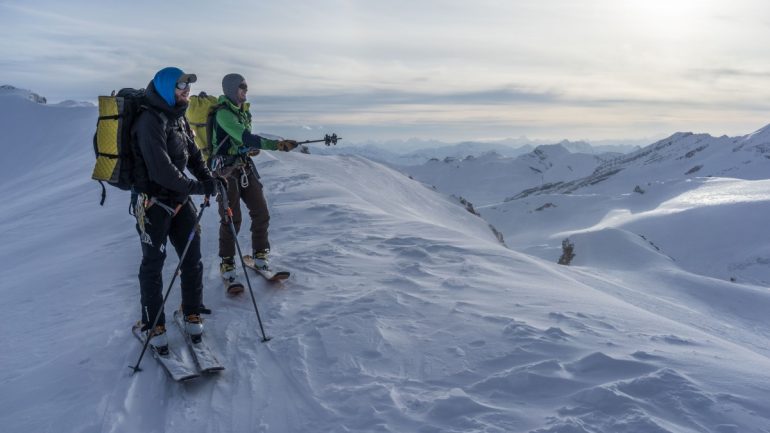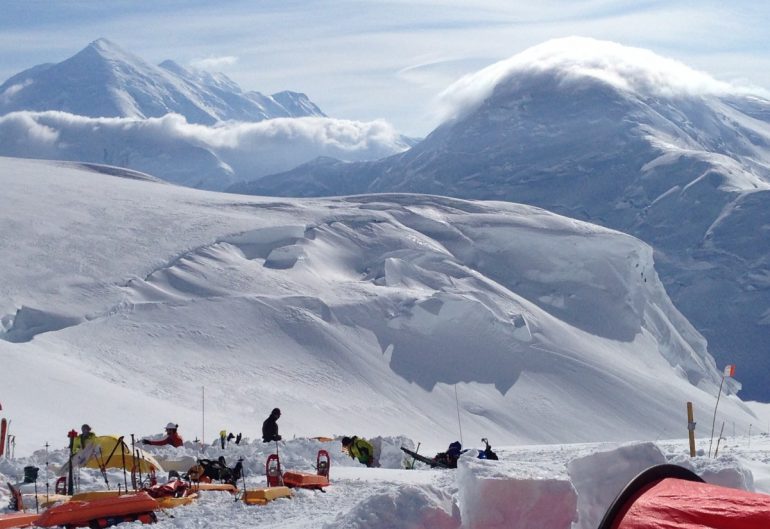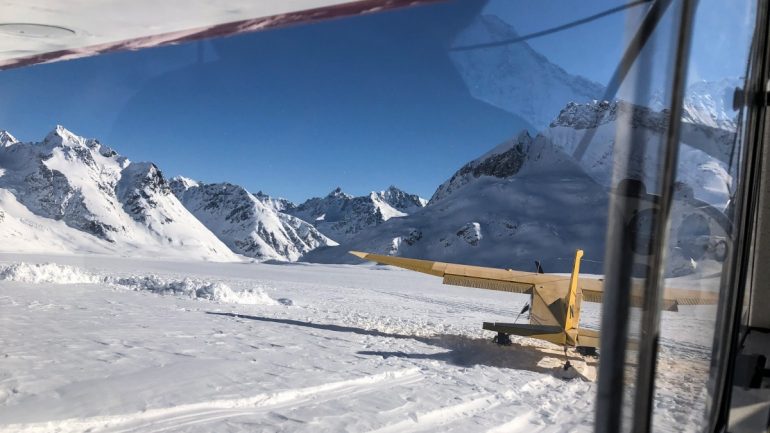5 steps to expedition planning success
Garden greens are sprouting, bears have woken up in the neighborhood, songbirds are singing, and the rationale behind flip flops is already undeniable. The pleasantries of springtime harken something magical in the mountain community: expedition season. For most of the last decade, May usually means that its time to stock up on Mountain House, patch the holes in my gear, and finalize plans with bush plane pilots, but this year’s trip is getting pushed back. Many in the community are in the same boat, and many others, stuck at home since March, will soon return to the mountains jonesing for all we have missed.
So, this is a great time to think about expedition planning! Great trips take thought, research, stoke, and time to put together — why not put a trip on the books for next year?
Step one: Set a goal
At the beginning of this past March, back when the world seemed predictable, I flew into Lake Clark National Park with two friends. We had no ‘line’ in mind to ski, no peak to climb, but an incredible valley of endless terrain to explore. I stare at these mountains from across the Cook Inlet in Anchorage. Only 100 miles from home, the peaks have no roads, no guidebooks, and see few visitors.
Expeditions start with a goal – this should be achievable, hard, and worthwhile. Maybe you’ve always wanted to go to Alaska, traverse an icefield, summit Mount Rainier, tick off one of the 50-classics, eat poutine in the Canadian Rockies, or explore a new corner of your home range. Think about what your personal mountain goals are, how they can be an opportunity for growth, what you might get out of the experience, what you can give to the experience, and what success would look like. Some goals may take years to build up skills and experience for, others might ripe for next weekend. Be realistic, but aspirational. I want to drop in and ski the middle of the Wickersham Wall off the north peak of Denali–will it ever happen? Probably not, but I also want to ski couloirs, smaller peaks, and glacier bowls in a bunch of zones across the Alaska Range ripe for a lifetime of great trips – achievable, fun, challenging, rad.
Goals don’t have to be places either, they could be a type of trip, challenge, or mystery that solidify once you get to step three…. Personally, my favorite expeditions of late are to new places – I love finding a corner of the mountains that feels unknown. Staring at Lake Clark from my deck while drinking coffee, it has been impossible not to wonder what’s in those mountains – now I want to go back.
Step two: Get a crew together
[Note: Sometimes this is step one.]
Know someone you really want to get into big mountains with? Talk about goals together, and make a trip happen. I had a Zoom beer with a couple friends last month and we started dreaming about trips for next year. I am stoked on the group and any number of ideas can work with a killer crew.
A good trip requires good people above all else – it’s more important than the place, the objective, or the gear. Your goals should overlap, but you should also think about people who bring different knowledge and skills to the crew. Maybe you need someone with more technical experience, or want a trailbreaker, or need someone who crushes the camping game. Remember, you need people that are funny, stoked, and positive when sitting around a tent playing cards.
Also – you should share the same notion of success. Generally success for me means staying safe, staying friends, and having fun–getting to the top is a bonus.
Step three: Research
A few years back, I headed into the Eastern Alaska Range for a week of skiing after a friend and I noticed how poor the resolution was on Google Earth images. Big, cold, snowy, lonely mountains in every direction made for a beautiful and exhausting trip. Seeing what was beyond the resolution of the internet was immensely satisfying.
Even lack of info tells you something, but of course sat photos, old issues of the AAJ, the full plethora of trip reports, guide books, and mystic tales overheard at the bar are all prime mines for beta too. It is important to remember that conditions change and reports often filter through skill level goggles. Just because someone else found something straightforward or easy, doesn’t mean you will. Also, while I own enough guidebooks to sink a canoe – they are not infallible. Set a GPS track on a common route, and it’s not unusual to find mileage and vert that doesn’t correspond to what the book says…
Don’t be afraid to reach out to locals. Sure some people are old curmudgeons who won’t say anything more than, “yea, go figure it out.” But more often than not, people would rather share beta with someone who reaches out personally than over a public trip report. PM someone on instagram, call guide shops, look for background lines in old Warren Miller clips, talk to friends of friends, ask around – the mountain community is awesome!
Step four: What’s plan B, C, D, E….
Okay – so you want to come up to Alaska and do the Eklutna Traverse. You’ve bought the guidebook, found some trip reports, talked to locals – but you get up here and the weather is totally socked-in, avalanche conditions are dangerous, and you spend a week stuck in a hut scared to go outside….This is avoidable.
I know that goals are tough to let go of, so as you plan your trip, make contingencies. Think about where weather patterns might be different, where possible exits could be, and how things might change. Last year, bad weather but firm dates made me swap out an AK trip expedition skiing, for a PNW volcanoes road trip. Instead of digging out a tent for a week, we chased good weather and skied classic lines on Rainier, St.Helens, Adams, and Hood. Any trips you can’t make happen, just give you more info for later…
Step five: Training
I know, it’s 40 degrees and raining, plus Joel McHale just put out a new episode of Tiger King – it’s tough to get outside. You can totally have a big day “off the couch,” right? You can, but you gotta move the couch…Ski, run, bike, climb, knead bread, take your dog for a walk, chop wood, do yard work, move. If you get lost on a half day mission, it’s great training. If you carry an extra few liters of water (you can always dump it out for the down), it’s great training. If you bushwack in a circle and end up carrying skis through alders for 5 miles only to end up back at the car, it’s great training. Practice your systems too – glacier travel snow assessment, and camp cooking are all skills that can get rusty. Get outside, tie knots, rewatch Aspen Extreme and Vertical Limit, take the stairs, ABT — Always. Be. Training.
The time, money, and planning that go into a big trip are investments that pay off when you feel at your best. A bit of prep can ensure you aren’t held back by fitness, comfort with systems, or knowledge that you would have gotten by reviewing Freedom of the Hills a few times before heading out. Training looks different for every expedition, but think about what you do regularly and train your weaknesses. If you get a lot of days on skis, but you are going to have to drag a heavy sled – think about weight training. If you are going to put in miles more than vert, maybe adding running into the mix. Haven’t done a lot of winter camping? Pitch a tent in your yard, set up a mid, and cook dinner.
Step six: Logistics
Now it’s time to get that gear list together, book flights, and make a menu. Remember, just because you’re base camping, doesn’t mean it’ll be easy to thaw out eggs. Test out new gear. Try and get out with your team. Hope for the best, but have a plan for the worst.
I really believe in the ‘light-is-right’ mentality, but I always carry a hefty repair kit. For basecamp trips, invest in a mid or large cook tent. You can never bring too many pairs of socks.
Expeditions and big trips can feel daunting, but take it one step at time and you can make them happen especially if you have until next year — good planning makes for good trips!
Need some other how-to inspiration? Check out our plentiful other tips and tricks.
Dr. Alex Lee lives in Anchorage, Alaska. Alex is a professor at Alaska Pacific University, teaching philosophy and environmental studies. He also works as a sometimes guide, naturalist, writer, and photographer.




